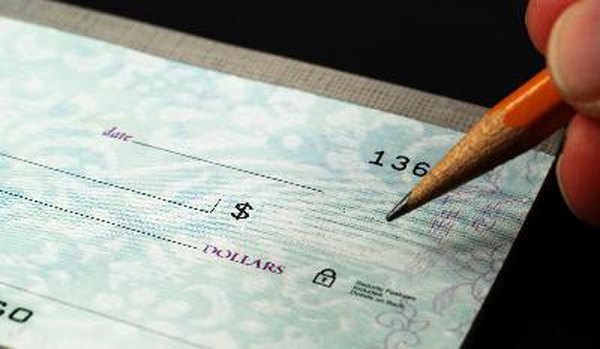What Is the Penalty for Paying Federal Estimated Taxes Late?
You need to write a check for estimated taxes on time.
Stock pictures of checks used as a form of payment image by Albert Lozano-Nieto from Fotolia.com
As you earn income, the taxes owing must be paid on this amount must be paid. If you work as an employee, your employer will deduct a certain amount for taxes each pay period and submit it for you. If you have self-employed earnings, either on a part-time or full-time basis, you are responsible for ensuring that you are familiar with the federal estimated tax due dates so you can submit your federal taxes personally. Failure to do so may mean having to pay a penalty.
Tip
After you file your income tax return, you may still have to pay a penalty if you haven't paid a sufficient amount in estimated taxes throughout the year. It is imposed for each day that the amount of the underpayment remains outstanding. Use Form 2210 to determine whether you may owe a penalty.
Who Needs to Make Estimated Tax Payments
If you're operating a business on your own or as part of a partnership, you'll probably need to make estimated tax payments. You may also need to do so if you are a shareholder in an S corporation. According to the Internal Revenue Service 1040-ES(IRS), if you expect to owe a total of $1,000.00 or more when you file your income taxes you will need to make estimated tax payments.
Federal Estimated Tax Due Dates
Estimated payments are usually made quarterly; they are due on or about:
- April 15
- June 15
- September 15
- January 15 (the year after you earned the income)
The actual due date may be delayed to the next business day if the 15th falls on a weekend. You don't have to make your payment due on January 15 if you file your income tax return by the end of January and pay the entire balance owing at that time, according to the IRS.
Use Form 1040-ES to calculate your estimated tax payments. Be sure to check the top, left-hand corner of the form before you start to ensure that you have the correct year before you start using the form. You should be using the Form 1040-ES for the current calendar year; it will have the correct figures for your standard deductions (used if you don't itemize your deductions) and the tax rate schedules.
You may be able to annualize your payments to compensate for periods where you are earning unequal income, not distributed evenly by quarters. You'll have to complete a Form 2210 to calculate payments in this case, but your total estimated payments must equal 90 percent of your liability for the tax year.
Estimated Tax Penalty from IRS
The IRS imposes a penalty for late or insufficient payments. Since the U.S. tax system is a "pay as you go" one, you do have the option of making more than four payments (one each quarter) to keep your IRS estimated tax paid up to date. Some taxpayers may find that making smaller payments more frequently is a more convenient option.
Underpayment Penalty for 2018
For the 2018 tax year, the IRS has issued a waiver for taxpayers who haven't paid enough in withholdings and estimated income taxes throughout the year. If you have paid at least 85 percent of your total income taxes for the year, you will not have to pay a penalty. In a situation where you have paid less than 85 percent of your income tax owing throughout the year, you will be charged a penalty by the IRS. To request the waiver for the 2018 tax year, complete and submit Form 2210 (Underpayment of Estimated Tax by Individuals, Estates, and Trusts) along with your federal income tax return.
Underpayment Penalty for 2017
You could owe a penalty on your 2017 income taxes if your estimated income taxes and any withholdings from employment income are lower than 90 percent of your 2017 tax or the full amount of your 2016 tax.
For more information about estimated tax payments and how to calculate them, consult with an experienced tax professional who can answer your questions and address any concerns you may have.
References
- Internal Revenue Service: Penalty for Underpayment of Estimated Tax
- H&R Block: How to Address IRS Penalties
- IRS: Publication 505: Tax Withholding and Estimated Tax For use in 2018
- IRS: Form 2210, Underpayment of Estimated Tax by Individuals, Estates, and Trusts
- Peterson Sullivan LLP: IRS Waives 2018 Underpayment Tax Penalties for Many Taxpayers
Writer Bio
Bob Haring has been a news writer and editor for more than 50 years, mostly with the Associated Press and then as executive editor of the Tulsa, Okla. "World." Since retiring he has written freelance stories and a weekly computer security column. Haring holds a Bachelor of Journalism from the University of Missouri.

